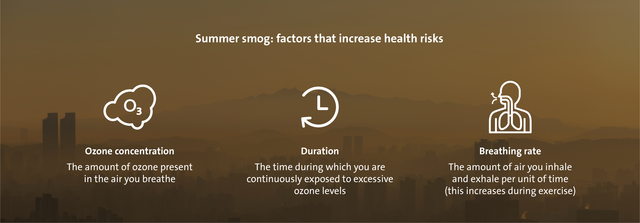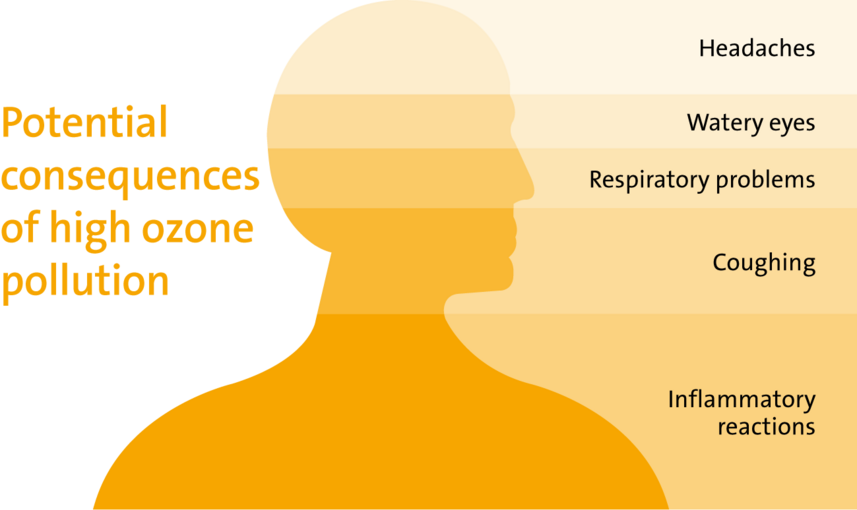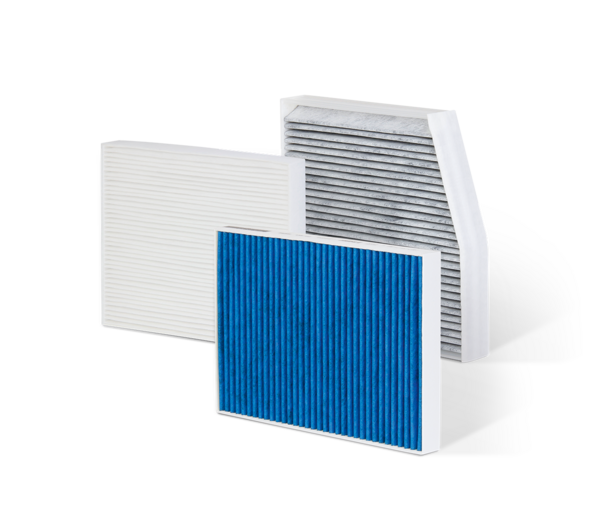Summer, sun, smog
Why ozone formation in summer is a problem and how it affects health
Extended periods of good weather and high temperatures over several weeks in the summer give people that vacation feeling. When these conditions are accompanied by a lack of wind, you often hear that ozone levels are too high in many places around the world. But what does that mean exactly? And what is the effect of too much ozone in the atmosphere?
What is ozone?
Ozone (O3) is a colorless gas. In the upper atmosphere, it forms a layer. This ozone layer provides protection from ultraviolet solar radiation, which can damage human skin. At ground level, ozone acts as a greenhouse gas. However, its warming effect on the atmosphere is limited both geographically and temporarily: it usually decays within a few days and forms only under certain weather conditions.
What makes ozone dangerous is that in high concentrations it irritates the respiratory system. Accompanying symptoms include headaches, watery eyes, and fatigue. This is because ozone is an oxidizing agent and so has a strong, quick reaction with other substances. Humans first become aware of ozone when it comes into contact with their highly sensitive mucous membranes.
What is the connection between ozone and summer smog?
Extended periods of good weather and high temperatures are the main reason why large amounts of ozone are formed. Intense solar radiation causes airborne volatile organic compounds, methane, nitrogen oxides, and other substances to react with each other in complex processes to create ozone. Ozone accumulates in the air during the course of the day, which results in particularly high concentrations in the early evening. This phenomenon is known as summer smog or photosmog, due to the sun’s role in its creation.
The combination of intense solar radiation and exhaust fumes from wartime industrial production led to a considerable photosmog problem in Los Angeles during the 1940s. It is for this reason that summer smog is also colloquially referred to as LA smog.
While winter smog is characterized by air that is polluted by soot, dust, and sulfur dioxides, summer smog is often barely visible. Although the solid contaminants in the air can be recognized as a fine haze, ozone is invisible.
Ozone levels are also often moderate in places with high concentrations of pollutants from traffic and industrial emissions. This is because the nitrogen monoxide from exhaust gases reacts with ozone and breaks it down in the air. However, if the substances that facilitate its formation reach less polluted areas, they can lead to very high concentrations of ozone in those areas.

Excessive levels of airborne ozone endanger health
High concentrations cause fatigue. Sports activities under such conditions increase the strain on the body. Other typical consequences of exposure to excessive ozone levels include headaches, an irritated respiratory system, coughing, and watery eyes. If ozone reaches deeper into the lungs, it can trigger inflammatory processes and cause tissue damage. Young children and people with respiratory and cardiovascular diseases are particularly at risk.

Citizens are informed or officially warned if the ozone concentration exceeds certain limits. In the European Union, for example, official information is issued if the hourly average exceeds 180 µg/m3, while an alert is issued if the hourly average exceeds 240 µg/m3. The World Health Organization (WHO) considers average values of less than 100 µg/m3 to be uncritical. This is also the highest acceptable eight-hour average according to the WHO Air Quality Guidelines.
Optimum protection in road traffic
In urban traffic, the “tunnel effect” can quickly cause ozone and other contaminant gases to accumulate in the car interior and exceed critical levels. Protecting health by preventing ozone contamination requires efficient, high-performance cabin air filters that provide dependable protection against these types of gases. Freudenberg Filtration Technologies’ range of micronAir cabin air filters offers reliable solutions for this application.


Industrial exhaust gases: a special case
Ozone-free paper production
Bleaching is an essential process in manufacturing paper.
Ozone is produced during most bleaching processes. It can accumulate in the air and endanger employee health. However, bleaching is indispensable for many end products, as it removes lignin, a substance that causes unwanted coloration. Chlorine-free bleaching of pulp produces ozone. CCP 310 and CCP 610 pellets bind the harmful gas during gas phase filtration, which minimizes the health risks over the production process.
Smog-free fun in the sun
Improved exhaust gas cleaning and fewer industrial emissions has caused ozone pollution to slightly decrease in many regions around the world during recent decades. Nevertheless, high concentrations in certain regions during the summer can endanger health. Freudenberg Filtration Technologies’ filter solutions provide reliable protection against exposure to high ozone levels.
Learn more about the impact of sun, rain, and other factors on air quality in our online magazine Automotive Filtration Insight.











